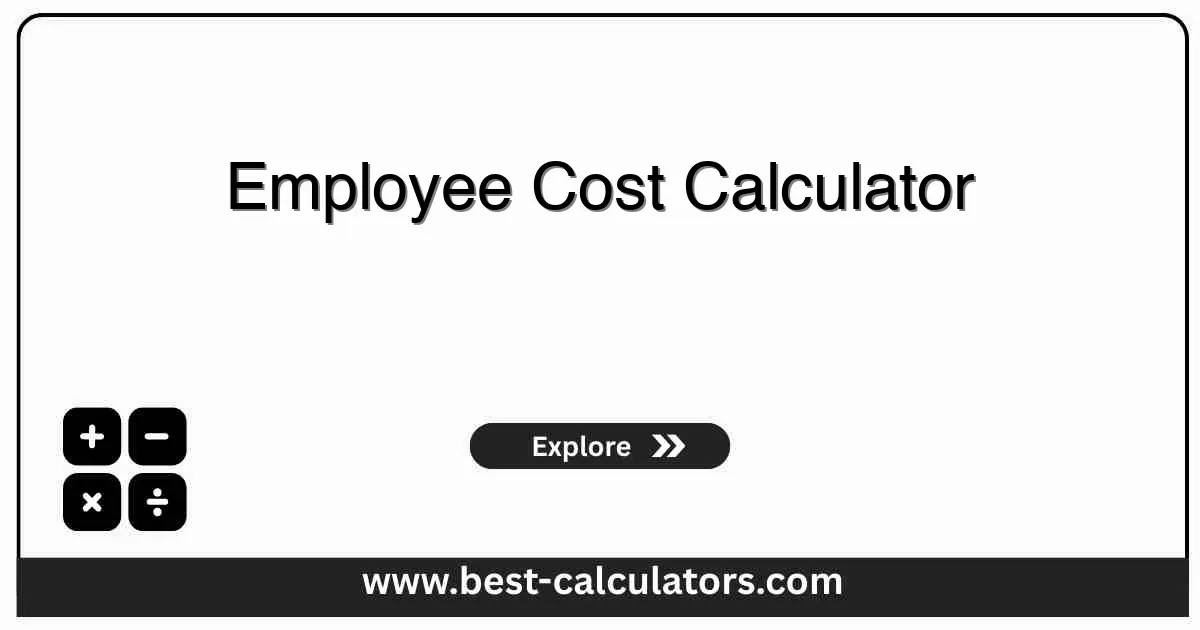Employee Cost Calculator - Calculate Total Employment Expenses
Calculate the true cost of employing staff including salary, benefits, taxes, and overhead expenses for better workforce planning and budgeting.
Employee Cost Calculator
Results
What is an Employee Cost Calculator?
An Employee Cost Calculator is a free business tool that helps you calculate the total cost of employing staff beyond just their base salary. It determines the comprehensive employment expenses including benefits, taxes, and overhead costs.
This calculator works for:
- Small businesses - Determine true staffing costs for budgeting
- HR professionals - Calculate total compensation packages
- Business owners - Make informed hiring and pricing decisions
If you're also interested in determining fair hourly rates for your employees based on their annual salaries, you can use our Hourly Rate Calculator to get precise calculations quickly.
For businesses that rely on commission-based compensation to motivate sales teams, our Sales Commission Calculator helps you structure effective incentive programs.
To better understand your overall business profitability and pricing strategies, explore our Gross Margin Calculator for comprehensive financial insights.
How Employee Cost Calculator Works
The calculation uses the formula:
Where:
- Base Salary = Annual gross salary/wages
- Benefits = Percentage of salary for health, retirement, etc.
- Taxes = Employer portion of Social Security, Medicare, etc.
- Overhead = Office space, equipment, training, etc.
Key Concepts Explained
Total Compensation
The complete package an employee receives including salary, benefits, and perks.
Hidden Costs
Indirect expenses like training, equipment, and workspace that aren't part of salary.
How to Use This Calculator
Enter Base Salary
Annual gross salary (e.g., $50,000)
Enter Benefits %
Percentage for health, retirement (e.g., 30%)
Enter Payroll Taxes
Employer taxes (e.g., 7.65%)
Get Results
View total employment costs and breakdown
Benefits of Using This Calculator
- • Accurate Budgeting: Plan workforce expenses with precision.
- • Informed Hiring: Understand true costs before making offers.
- • Pricing Strategy: Set prices that cover all employment costs.
- • Cost Optimization: Identify areas to reduce employment expenses.
Factors That Affect Your Results
1. Benefits Package
Comprehensive packages increase costs but improve retention.
2. Location
Regional differences affect salary expectations and tax rates.
3. Industry Standards
Competitive compensation varies by sector and role.

Frequently Asked Questions (FAQ)
Q: What is included in employee cost calculations?
A: Employee costs include direct compensation (salary/wages), statutory benefits (Social Security, Medicare), voluntary benefits (health insurance, retirement), payroll taxes, and indirect costs like training, equipment, and office space.
Q: Why is it important to calculate total employee cost?
A: Understanding total employee cost helps businesses budget effectively, price products/services appropriately, make hiring decisions, and evaluate the return on investment for each employee.
Q: How can I reduce employee costs without cutting salaries?
A: You can reduce employee costs by improving efficiency through training, automating repetitive tasks, optimizing benefits packages, implementing flexible work arrangements, and reducing turnover which is costly.
Q: What is the difference between salary and total employee cost?
A: Salary is just one component of employee cost. Total employee cost includes salary plus benefits, taxes, and overhead expenses. The total cost is typically 1.25 to 1.4 times the base salary.